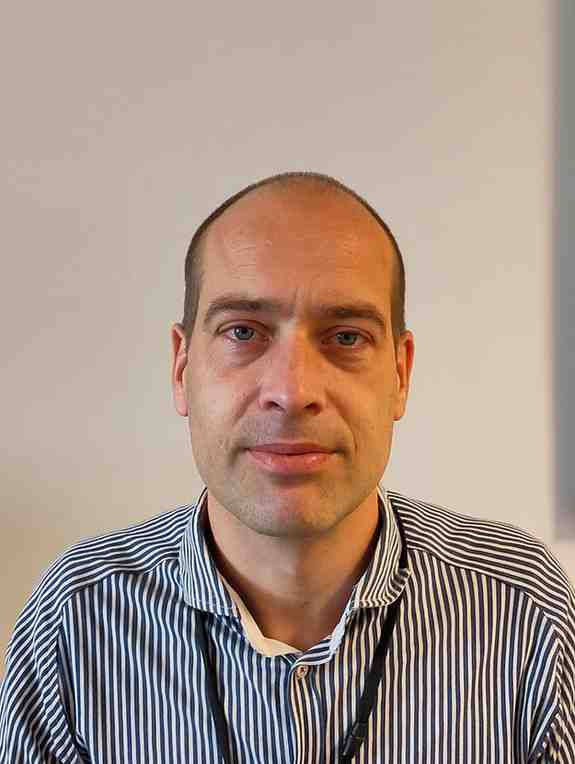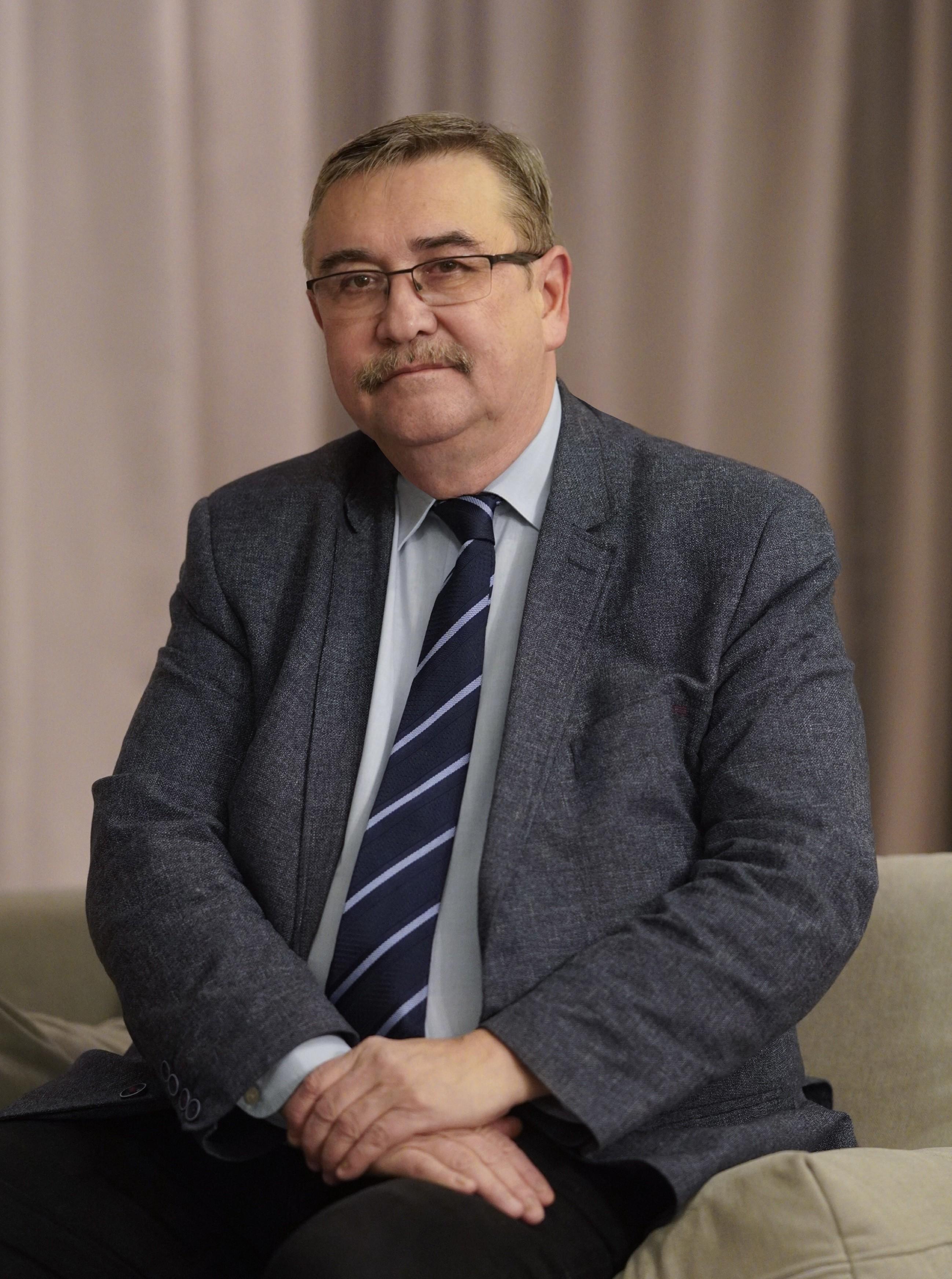AUCTORES
Globalize your Research
Research Article | DOI: https://doi.org/10.37579/2834-5142/039
1 Pediatric Department, Mashhad University of Medical Sciences, Mashhad, Iran.
2 Islamic Azad University of Medical sciences Mashhad, Iran.
*Corresponding Author: Sepideh Sadat Seyedkaboli, Pediatric Department, Mashhad University of Medical Sciences, Mashhad, Iran
Citation: Anoush Azarfar, Sepideh S. Seyedkaboli., Mitra Naseri., Fatemeh G. Sharba., Yalda Ravanshad., et al. (2023), Comparison the Effect of Oral Pulse Therapy Calcitriol with Oral Daily Calcitriol in Hemodialysis Patients., International Journal of Clinical Nephrology. 5(2); DOI:10.37579/2834-5142/039
Copyright: © 2023, Sepideh Sadat Seyedkaboli. This is an open-access article distributed under the terms of the Creative Commons Attribution License, which permits unrestricted use, distribution, and reproduction in any medium, provided the original author and source are credited.
Received: 17 January 2023 | Accepted: 11 May 2023 | Published: 23 May 2023
Keywords: oral calcitriol; serum level of pth; hemodialysis
Abstract
Introduction: Disorders in bone metabolism are common in chronic kidney disease (CKD). Secondary hyperparathyroidism is a common complication of chronic kidney disease and is managed using vitamin D replacement therapy. This condition is caused by various factors such as calcitriol deficiency, advanced hyperphosphatemia, partial hypocalcemia, and parathyroid hormone resistance
Objectives: Calcitriol oral pulse therapy has been suggested as the treatment of choice for secondary hyperparathyroidism, but its efficacy and safety are still under discussion. Therefore, in the present study, we compared the effect of calcitriol pulse therapy with daily oral calcitriol in patients referred to the hemodialysis ward of Dr. Sheikh Hospital.
Patients and Methods: In this cross-sectional descriptive study, patients undergoing hemodialysis who were referred to the hemodialysis center of Dr. Sheikh Hospital in Mashhad between 2019 and 2020 were studied. Calcitriol tablets were administered orally 0.25 mg daily and pulse therapy twice a week at 0.75 mg for 2 months after dialysis. The serum levels of Ca, P, PTH at the beginning of the study and 2 months after that were assessed. Demographic information (age and gender), type of underlying renal disease, and hours and number of dialysis sessions were recorded in information forms for each patient, and the data were analyzed using SPSS software version 20.0.
Results: During the study, 21 patients with a mean age of 9.18 years in the case group and 10.9 years in the control group were included in the study, of which 27.3% in the case group and 40% in the control group were boys. The mean dialysis time and session duration were 2.63 days and 3.4 hours in the case group and 2.7 days and 3.4 hours in the control group, respectively. Regarding the type of disease, 63.6% in the case group and 60% in the control group had congenital anomalies of kidney and urinary tract (CAKUT). There was no statistically significant difference between the case and control groups in terms of serum levels of Ca, P, hemoglobin, Kt/V, and PTH.
Conclusion: Based on the findings of the present study, switching daily calcitriol therapy to twice-weekly calcitriol pulse therapy seems safe and convenient, especially for hemodialysis
The prevalence of electrolyte disorders in patients with renal insufficiency and under dialysis, including imbalance in calcium and phosphorus levels, which usually results in bone deformities, requires an accurate control of these electrolyte disorders. In pediatric patients, it is more vital because they are in growing age, and bone metabolism disorder and hyperparathyroidism critically affect their height growth, thus their social life and future performance. Moreover, considering the use of various drugs in this group of patients, different methods in administering drug, such as oral pulse therapy as an alternative method of oral daily therapy, should be taken into account for systemic absorption and effectiveness of treatment. These alternative methods can reduce long-term treatment costs by minimizing the number of oral pills taken.
Calcium (Ca) and phosphorus (P) are involved in the regulation of homeostasis by various hormones that act on the kidney, intestine, and bone. The most important regulatory hormone is parathyroid hormone (PTH). The production and secretion of PTH by the parathyroid glands increase in response to decrease in extracellular Ca concentration. PTH accelerates the activity of 1α hydroxylase in proximal tubule to produce the biologically active form of vitamin D (1.25 dihydroxyvitamin D) from its precursor, 25 hydroxy vitamin D (1). Therefore, it increases the intestinal absorption of calcium and phosphorus (2), stimulates the releases of Ca and P (3), and increases the reabsorption of Ca from the distal tubule and stimulates the urinary secretion of phosphorus (4).
Chronic increase in PTH level is common in end-stage renal disease (ESRD) and is associated with parathyroid hyperplasia and excessive increased secretion of this hormone. The first intervention to solve this problem is to maintain a normal phosphorus level in diet, to have proper dialysis, and to use phosphate binders. By controlling serum phosphorus levels, administration of the active form of vitamin D is necessary to prevent the occurrence of secondary hyperparathyroidism in patients undergoing chronic hemodialysis. The active form of vitamin D can shift the calcium set point in parathyroid glands to left, which decreased PTH secretion in response to decreased serum calcium levels. The active form of vitamin D can be administered orally (3) and intravenously during dialysis.
The past studies showing the effect of daily oral and pulse therapy of active form of vitamin D have conflicting results (10-13). There is still no certainty about the optimal method of administering the active form of vitamin D.
Objectives
Therefore, in the present study, we compared the efficacy and side effects of oral pulse therapy versus daily oral calcitriol in patients referred to the hemodialysis ward of Dr. Sheikh Hospital.
Patients and Methods
Study design
This study included patients with chronic renal failure (CRF) on a regular hemodialysis as well as secondary hyperparathyroidism. In this study, after a full explanation of the plan for the parents of the patient, informed consent was obtained. Demographic information (age and gender), type of underlying renal disease, and hours and number of dialysis sessions were recorded in information forms for each patient. The 21 patients were divided into two groups. One group received the calcitriol oral tablet 0.25 mg daily, and the second group had the calcitriol oral pulse therapy two times a week 0.75 mg in two hemodialysis sessions for eight weeks by a single nurse. Biochemical and PTH tests and serum levels of Ca and P were assessed in the beginning of the study and two months after.
The data were analyzed by SPSS software version 20.0. The inclusion criteria were age < 18 years and CKD patients undergoing hemodialysis who needed to receive calcitriol for the treatment of secondary hyperparathyroidism. The exclusion criteria were primary metabolic disease, intestinal malabsorption, malignancy, underlying endocrine disease, and underlying liver disease.
Statistical analysis
The collected data were categorized and analyzed in SPSS software version 20.0. Qualitative data are presented as percentages and quantitative data with mean and standard deviation (STD). The frequency distribution of qualitative data categories was compared using chi-square test. The Smirnov-Kolmogorov test was used to check the normality of the data. To compare the data groups with normal distribution, the independent student t-test was used, and for the data with not-normal distribution, the Mann-Whitney nonparametric test was applied. The Wilcoxon test was used to compare quantitative variables before and after the study in each of the two groups (dependent samples). The significance level of the tests was considered 5%.
A total of 21 patients were enrolled in this study in the form of daily oral consumption and oral pulse therapy. The mean age of the patients was 9.18 ± 2.64 years in the case group and 10.9 ± 2.13 years in the control group, and 72.2% of patients in the case group and 60% in the control group were female. The mean number of dialysis sessions was 2.63 ± 0.5 in the case group and 2.7 ± 0.48 in the control group. The mean number of dialysis hours was 3.4. ± 0.47 in the case group and 3.1 ± 0.31 in the control group.

Table 1. Comparison of case and control groups in terms of age, dialysis time, dialysis hours, and age of diagnosis.
As can be seen in Table 1, the case and the control group at the beginning of the study did not have any statistically significant difference in terms of age, number of dialysis sessions, and dialysis duration. However, the age at the time of diagnosis was statistically different between the two groups, and the control group were in average younger at diagnosis (P = 0.004).

Table 2. Sex frequency distribution in the case and control groups
We can see in Table 2 that the frequency difference of gender in the case and control groups was not statistically significant. Likewise, the frequency of kidney diseases between the case and control groups was not statistically different (Table 3).

Table 3. Frequency distribution of kidney disease in the case and control groups

1Hb: hemoglobin
2Kt/V:clearance the amount of urea your dialyzer can remove (liters/minute) t: time the duration of treatment (minutes) V: volume the amount of body fluid (liters)
3PTH: Parathyroid Hormone
As provided in Table 4, at the beginning of the study, the case and control groups in terms of serum levels of calcium, phosphorus, potassium, hemoglobin, PTH, and Kt/V were not statistically different.
Table 4. Comparison of the studied parameters in case and control groups before the intervention

1Hb: hemoglobin
2Kt/V:clearance the amount of urea your dialyzer can remove (liters/minute) t: time the duration of treatment (minutes) V: volume the amount of body fluid (liters)
3PTH: Parathyroid Hormone
Table 5. Comparison of the studied parameters in case and control group after the intervention (mg/dl)
As can be seen in the Table 5, at the end of the study, the case and control group did not have a statistically significant difference in serum level of calcium, phosphorus, potassium, Kt/V, and PTH. Only serum hemoglobin level in two groups had a significant difference and was higher in the case group after the intervention (P = 0.029).
| Group | time | Min (mg/dl) | Max (mg/dl) | Mean (mg/dl) | STD | Test statistic | P-value |
| Case | Pre intervention | 2 | 755 | 287.24 | 284.43 | Wilcoxon Signed Ranks z= -0.133 | 0.894 |
| Post intervention | 9 | 730 | 321.09 | 299.68 | |||
| Control | Pre intervention | 2 | 755 | 287.24 | 284.43 | Wilcoxon Signed Ranks z = -0.889 | 0.374 |
| Post intervention | 34 | 1000 | 370.10 | 279.40 |
Table 6. Comparison of serum PTH level before and after the study in the case and control group
As can be seen in Table 6, there was no statistically significant difference in serum PTH level before and after the study, in neither of the groups.
This clinical trial study demonstrated that intermittent (pulse) calcitriol therapy did not have any significant advantage in comparison with oral daily administration in controlling intact PTH (iPTH) level in children with CRF prior to dialysis. Calcitriol is an important regulator of PTH secretion. It decreases PTH synthesis by genomic actions on PTH mRNA. In this study, examining two methods of oral administration, not significant difference was found in Ca and PTH levels. In contrast, in the study of Myriam (2014) et al., the effect of intermittent oral alfacalcidol versus intravenous injection on the control of PTH was investigated. They showed that oral administration of alfacalcidol three times a week is more effective than intravenous injection. Oral administration of alfacalcidol is associated with increased in serum Ca level and lower level of PTH and alkaline phosphatase (ALKP) (2).
One of the factors that can affect the response to active vitamin D treatment is the severity of secondary hyperparathyroidism compared to the prescribed vitamin D method (9-11). As well, the patient’s collaboration in treatment with oral active vitamin D affects the effectiveness of treatment (12). The other benefit is that oral therapy is less costly than the injection method, in terms of therapeutic cost (13). For better control of secondary hyperparathyroidism, it is necessary to start the treatment with active vitamin D as soon as possible, which is more available and cheaper when taken orally, saving on additional costs and ancillary care, including nursing services.
In Ardissino’s study, similar to our study, calcitriol was used in two methods of pulse therapy and daily consumption (3). No advantage was seen between the two methods. However, that study was conducted with a different dose of calcitriol in patients who were not undergoing hemodialysis in renal failure, which may have affected the unresponsiveness to calcitriol. One of the key observations in the study by Ardissino et al was the lack of correlation between the decrease in PTH level at the end of the study and the initial serum PTH level, which was also observed in our study. Furthermore, the incidence of hypercalcemia and hyperphosphatemia in that study was low, which could be due to low administration dose of calcitriol (70 ng/kg per week). Another reason could be that the children who were not on hemodialysis were included in their study (3).
Due to the role of calcitriol in suppressing the parathyroid receptors and controlling hyperparathyroidism, the use of calcitriol pulse therapy can provide better control in secondary hyperparathyroidism by creating the peak effect faster and saturating parathyroid receptors [3,17,18)]. Injectable calcitriol may be considered superior, but Bacchini's study showed that injectable therapy was not superior to oral paracetamol suppressants and had more side effects, such as hypercalcemia and hyperphosphatemia (9). In addition, a crossover study by Moe et al. in children undergoing hemodialysis showed that intestinal absorption of calcium did not increase by injection in comparison to oral consumption [7].
In the study of Herrmann et al., which was performed on adults undergoing hemodialysis, there was no difference between the levels of PTH with the same dose of calcitriol given as pulse therapy and daily oral administration, in agreement with our results (17). This study was performed over two weeks. No benefits or side effects were seen in pulse therapy with calcitriol. The study also showed that the best suppressor in PTH level occurs within four to eight weeks from the start of the treatment (17); in our study, the duration of eight weeks was considered as the duration of treatment.
Some in vitro studies have shown that calcitriol has a biphasic effect on cell proliferation. At low doses in the range of 1010 nm, it inhibits the cell proliferation in cells of various organs, but at high doses in the range of 1012 nm, it stimulates cell proliferation (18). In the study of Kuizon et al., it was shown that daily consumption of oral calcitriol was superior to calcitriol pulse therapy in stimulating growth plate and mineralization. Assuming these findings are conclusive, in vitro use of calcitriol pulse therapy for the treatment of secondary parathyroidism in bone growth should be replaced with calcitriol daily (15). In our study, the effect of calcitriol pulse therapy on growth retardation was not investigated. Due to the vulnerability of children to growth disorders and the effect of calcitriol pulse therapy on the induction of low turnover bone disease, perhaps the safety of this treatment can be examined more closely in future studies.
In Moe et al. study(7), similar to our study, the sample size was small, but the compliance of drug use was guaranteed, considering the administration in hemodialysis unit in a controlled manner. The results were thus more reliable. In our study, the results were reliable in the group undergoing pulse therapy due to the tight control of drug administration in the hemodialysis ward. However, in the group who received daily oral treatment, the results have been affected by the lack of proper compliance of children taking oral medications. Another point in Samantha et al. study like ours was the short duration of treatment, which was six weeks. In our study, it was eight weeks and perhaps by extending the treatment period, different results can be obtained.
The use of Alphacalcidole for three months had a similar clinical effect on serum PTH level after three months (8). As secondary hyperparathyroidism is a chronic disease, it is not clear whether rapid PTH suppression is necessary to prevent complications. Therefore, future studies are needed to evaluate the effect on clinical manifestations after a long period of treatment.
It seems that more interaction between the care team and patients, accurate knowledge on how to use the drugs in children, and better information from family members, especially mothers who are traditionally more involved in drug consumption of children, can mitigate the bone problems that these patients suffer from. One of the positive and strong points in the study was the assurance of drug administration in pulse therapy, controlled by the hemodialysis nurse.
Moreover, this study was conducted in a special center for children, and the results are expected to be more accurate than in other studies conducted in not specialized centers for children. Future studies in a larger statistical population and by separating the subjects into different age and sex groups could provide further statistical insights and achieve different results. In addition, in collaboration with other centers and use of other forms of active vitamin D, including the injectable forms, the study can be broadened to different geographical areas and by examining different forms of the drug. Providing a variety of incentive methods and preparing accurate charts to record the use of oral medications at home will help to accurately control the medications consumption and their impact on improving clinical symptoms.
Overall, the results of the present study showed that the administrations of oral calcitriol as pulse therapy or daily oral administration have no difference in the control of secondary hyperparathyroidism in patients undergoing hemodialysis. In term of parents and children cooperation in use of medications and acceptance of pulse therapy treatment, there was often acceptable cooperation. The most important limitation was the patients who received daily oral treatment at home, and we did not have accurate information about the quality and regularity of drug use.
In our study, most factors such as hemodialysis time, number of hemodialysis sessions, Kt/V and anemia in patients,were not significantly different between the two groups. It can be concluded that the duration and the number of hemodialysis sessions has no significant role in secondary hyperparathyroidism. Children with ESRD on hemodialysis are one of the most vulnerable groups of chronic patients with underlying problems. Considering the relationship between the serum level of different electrolytes and secondary hyperparathyroidism and height growth disorders in children, the efficient interaction and communication among the nephrologist, endocrinologist, and the pediatric orthopedist can be very helpful.
In recent decades, the importance of using oral and injectable forms of drugs used by patients undergoing hemodialysis has increased, and in various studies, different forms of drugs have been used for hemodialysis patients, including for anemia and hyperparathyroidism, to find the effective treatment in this group of patients. It is necessary that in future studies with a larger sample size, various forms of treatment are investigated to provide further findings.
Limitations of the study :
Limitation in number of patients
Author contributions :
Author contributions should be clarified based on the following items:
Conceptualization: A A, S S K
Methodology: YR
Validation: S S K
Formal Analysis: Y R
Investigation: A A, S S K, Y R, M N, F GH
Resources:
Data Curation:
Writing—Original Draft Preparation: S S K
Writing—Review and Editing: S S K
Visualization: S S K
Supervision: A A
Project Administration: A A
Funding Acquisition: A A The study was performed at a single institutional center. This study was approved by the Mashhad university of medical science. (IR.MUMS.MEDICAL.REC.1399.442) Moreover, This study was extracted from M.D thesis of Sepideh Sadat SeyedKaboli at this university ( thesis#981802 ). Ethical issues (including plagiarism, data fabrication, double publication) have been completely observed by the authors.
Conflicts of interest
The authors declare that they have no competing interests.
Funding/support
No funding
Clearly Auctoresonline and particularly Psychology and Mental Health Care Journal is dedicated to improving health care services for individuals and populations. The editorial boards' ability to efficiently recognize and share the global importance of health literacy with a variety of stakeholders. Auctoresonline publishing platform can be used to facilitate of optimal client-based services and should be added to health care professionals' repertoire of evidence-based health care resources.

Journal of Clinical Cardiology and Cardiovascular Intervention The submission and review process was adequate. However I think that the publication total value should have been enlightened in early fases. Thank you for all.

Journal of Women Health Care and Issues By the present mail, I want to say thank to you and tour colleagues for facilitating my published article. Specially thank you for the peer review process, support from the editorial office. I appreciate positively the quality of your journal.
Journal of Clinical Research and Reports I would be very delighted to submit my testimonial regarding the reviewer board and the editorial office. The reviewer board were accurate and helpful regarding any modifications for my manuscript. And the editorial office were very helpful and supportive in contacting and monitoring with any update and offering help. It was my pleasure to contribute with your promising Journal and I am looking forward for more collaboration.

We would like to thank the Journal of Thoracic Disease and Cardiothoracic Surgery because of the services they provided us for our articles. The peer-review process was done in a very excellent time manner, and the opinions of the reviewers helped us to improve our manuscript further. The editorial office had an outstanding correspondence with us and guided us in many ways. During a hard time of the pandemic that is affecting every one of us tremendously, the editorial office helped us make everything easier for publishing scientific work. Hope for a more scientific relationship with your Journal.

The peer-review process which consisted high quality queries on the paper. I did answer six reviewers’ questions and comments before the paper was accepted. The support from the editorial office is excellent.

Journal of Neuroscience and Neurological Surgery. I had the experience of publishing a research article recently. The whole process was simple from submission to publication. The reviewers made specific and valuable recommendations and corrections that improved the quality of my publication. I strongly recommend this Journal.

Dr. Katarzyna Byczkowska My testimonial covering: "The peer review process is quick and effective. The support from the editorial office is very professional and friendly. Quality of the Clinical Cardiology and Cardiovascular Interventions is scientific and publishes ground-breaking research on cardiology that is useful for other professionals in the field.

Thank you most sincerely, with regard to the support you have given in relation to the reviewing process and the processing of my article entitled "Large Cell Neuroendocrine Carcinoma of The Prostate Gland: A Review and Update" for publication in your esteemed Journal, Journal of Cancer Research and Cellular Therapeutics". The editorial team has been very supportive.

Testimony of Journal of Clinical Otorhinolaryngology: work with your Reviews has been a educational and constructive experience. The editorial office were very helpful and supportive. It was a pleasure to contribute to your Journal.

Dr. Bernard Terkimbi Utoo, I am happy to publish my scientific work in Journal of Women Health Care and Issues (JWHCI). The manuscript submission was seamless and peer review process was top notch. I was amazed that 4 reviewers worked on the manuscript which made it a highly technical, standard and excellent quality paper. I appreciate the format and consideration for the APC as well as the speed of publication. It is my pleasure to continue with this scientific relationship with the esteem JWHCI.

This is an acknowledgment for peer reviewers, editorial board of Journal of Clinical Research and Reports. They show a lot of consideration for us as publishers for our research article “Evaluation of the different factors associated with side effects of COVID-19 vaccination on medical students, Mutah university, Al-Karak, Jordan”, in a very professional and easy way. This journal is one of outstanding medical journal.
Dear Hao Jiang, to Journal of Nutrition and Food Processing We greatly appreciate the efficient, professional and rapid processing of our paper by your team. If there is anything else we should do, please do not hesitate to let us know. On behalf of my co-authors, we would like to express our great appreciation to editor and reviewers.

As an author who has recently published in the journal "Brain and Neurological Disorders". I am delighted to provide a testimonial on the peer review process, editorial office support, and the overall quality of the journal. The peer review process at Brain and Neurological Disorders is rigorous and meticulous, ensuring that only high-quality, evidence-based research is published. The reviewers are experts in their fields, and their comments and suggestions were constructive and helped improve the quality of my manuscript. The review process was timely and efficient, with clear communication from the editorial office at each stage. The support from the editorial office was exceptional throughout the entire process. The editorial staff was responsive, professional, and always willing to help. They provided valuable guidance on formatting, structure, and ethical considerations, making the submission process seamless. Moreover, they kept me informed about the status of my manuscript and provided timely updates, which made the process less stressful. The journal Brain and Neurological Disorders is of the highest quality, with a strong focus on publishing cutting-edge research in the field of neurology. The articles published in this journal are well-researched, rigorously peer-reviewed, and written by experts in the field. The journal maintains high standards, ensuring that readers are provided with the most up-to-date and reliable information on brain and neurological disorders. In conclusion, I had a wonderful experience publishing in Brain and Neurological Disorders. The peer review process was thorough, the editorial office provided exceptional support, and the journal's quality is second to none. I would highly recommend this journal to any researcher working in the field of neurology and brain disorders.

Dear Agrippa Hilda, Journal of Neuroscience and Neurological Surgery, Editorial Coordinator, I trust this message finds you well. I want to extend my appreciation for considering my article for publication in your esteemed journal. I am pleased to provide a testimonial regarding the peer review process and the support received from your editorial office. The peer review process for my paper was carried out in a highly professional and thorough manner. The feedback and comments provided by the authors were constructive and very useful in improving the quality of the manuscript. This rigorous assessment process undoubtedly contributes to the high standards maintained by your journal.

International Journal of Clinical Case Reports and Reviews. I strongly recommend to consider submitting your work to this high-quality journal. The support and availability of the Editorial staff is outstanding and the review process was both efficient and rigorous.

Thank you very much for publishing my Research Article titled “Comparing Treatment Outcome Of Allergic Rhinitis Patients After Using Fluticasone Nasal Spray And Nasal Douching" in the Journal of Clinical Otorhinolaryngology. As Medical Professionals we are immensely benefited from study of various informative Articles and Papers published in this high quality Journal. I look forward to enriching my knowledge by regular study of the Journal and contribute my future work in the field of ENT through the Journal for use by the medical fraternity. The support from the Editorial office was excellent and very prompt. I also welcome the comments received from the readers of my Research Article.

Dear Erica Kelsey, Editorial Coordinator of Cancer Research and Cellular Therapeutics Our team is very satisfied with the processing of our paper by your journal. That was fast, efficient, rigorous, but without unnecessary complications. We appreciated the very short time between the submission of the paper and its publication on line on your site.

I am very glad to say that the peer review process is very successful and fast and support from the Editorial Office. Therefore, I would like to continue our scientific relationship for a long time. And I especially thank you for your kindly attention towards my article. Have a good day!

"We recently published an article entitled “Influence of beta-Cyclodextrins upon the Degradation of Carbofuran Derivatives under Alkaline Conditions" in the Journal of “Pesticides and Biofertilizers” to show that the cyclodextrins protect the carbamates increasing their half-life time in the presence of basic conditions This will be very helpful to understand carbofuran behaviour in the analytical, agro-environmental and food areas. We greatly appreciated the interaction with the editor and the editorial team; we were particularly well accompanied during the course of the revision process, since all various steps towards publication were short and without delay".

I would like to express my gratitude towards you process of article review and submission. I found this to be very fair and expedient. Your follow up has been excellent. I have many publications in national and international journal and your process has been one of the best so far. Keep up the great work.

We are grateful for this opportunity to provide a glowing recommendation to the Journal of Psychiatry and Psychotherapy. We found that the editorial team were very supportive, helpful, kept us abreast of timelines and over all very professional in nature. The peer review process was rigorous, efficient and constructive that really enhanced our article submission. The experience with this journal remains one of our best ever and we look forward to providing future submissions in the near future.

I am very pleased to serve as EBM of the journal, I hope many years of my experience in stem cells can help the journal from one way or another. As we know, stem cells hold great potential for regenerative medicine, which are mostly used to promote the repair response of diseased, dysfunctional or injured tissue using stem cells or their derivatives. I think Stem Cell Research and Therapeutics International is a great platform to publish and share the understanding towards the biology and translational or clinical application of stem cells.

I would like to give my testimony in the support I have got by the peer review process and to support the editorial office where they were of asset to support young author like me to be encouraged to publish their work in your respected journal and globalize and share knowledge across the globe. I really give my great gratitude to your journal and the peer review including the editorial office.

I am delighted to publish our manuscript entitled "A Perspective on Cocaine Induced Stroke - Its Mechanisms and Management" in the Journal of Neuroscience and Neurological Surgery. The peer review process, support from the editorial office, and quality of the journal are excellent. The manuscripts published are of high quality and of excellent scientific value. I recommend this journal very much to colleagues.

Dr.Tania Muñoz, My experience as researcher and author of a review article in The Journal Clinical Cardiology and Interventions has been very enriching and stimulating. The editorial team is excellent, performs its work with absolute responsibility and delivery. They are proactive, dynamic and receptive to all proposals. Supporting at all times the vast universe of authors who choose them as an option for publication. The team of review specialists, members of the editorial board, are brilliant professionals, with remarkable performance in medical research and scientific methodology. Together they form a frontline team that consolidates the JCCI as a magnificent option for the publication and review of high-level medical articles and broad collective interest. I am honored to be able to share my review article and open to receive all your comments.

“The peer review process of JPMHC is quick and effective. Authors are benefited by good and professional reviewers with huge experience in the field of psychology and mental health. The support from the editorial office is very professional. People to contact to are friendly and happy to help and assist any query authors might have. Quality of the Journal is scientific and publishes ground-breaking research on mental health that is useful for other professionals in the field”.

Dear editorial department: On behalf of our team, I hereby certify the reliability and superiority of the International Journal of Clinical Case Reports and Reviews in the peer review process, editorial support, and journal quality. Firstly, the peer review process of the International Journal of Clinical Case Reports and Reviews is rigorous, fair, transparent, fast, and of high quality. The editorial department invites experts from relevant fields as anonymous reviewers to review all submitted manuscripts. These experts have rich academic backgrounds and experience, and can accurately evaluate the academic quality, originality, and suitability of manuscripts. The editorial department is committed to ensuring the rigor of the peer review process, while also making every effort to ensure a fast review cycle to meet the needs of authors and the academic community. Secondly, the editorial team of the International Journal of Clinical Case Reports and Reviews is composed of a group of senior scholars and professionals with rich experience and professional knowledge in related fields. The editorial department is committed to assisting authors in improving their manuscripts, ensuring their academic accuracy, clarity, and completeness. Editors actively collaborate with authors, providing useful suggestions and feedback to promote the improvement and development of the manuscript. We believe that the support of the editorial department is one of the key factors in ensuring the quality of the journal. Finally, the International Journal of Clinical Case Reports and Reviews is renowned for its high- quality articles and strict academic standards. The editorial department is committed to publishing innovative and academically valuable research results to promote the development and progress of related fields. The International Journal of Clinical Case Reports and Reviews is reasonably priced and ensures excellent service and quality ratio, allowing authors to obtain high-level academic publishing opportunities in an affordable manner. I hereby solemnly declare that the International Journal of Clinical Case Reports and Reviews has a high level of credibility and superiority in terms of peer review process, editorial support, reasonable fees, and journal quality. Sincerely, Rui Tao.

Clinical Cardiology and Cardiovascular Interventions I testity the covering of the peer review process, support from the editorial office, and quality of the journal.

Clinical Cardiology and Cardiovascular Interventions, we deeply appreciate the interest shown in our work and its publication. It has been a true pleasure to collaborate with you. The peer review process, as well as the support provided by the editorial office, have been exceptional, and the quality of the journal is very high, which was a determining factor in our decision to publish with you.
The peer reviewers process is quick and effective, the supports from editorial office is excellent, the quality of journal is high. I would like to collabroate with Internatioanl journal of Clinical Case Reports and Reviews journal clinically in the future time.

Clinical Cardiology and Cardiovascular Interventions, I would like to express my sincerest gratitude for the trust placed in our team for the publication in your journal. It has been a true pleasure to collaborate with you on this project. I am pleased to inform you that both the peer review process and the attention from the editorial coordination have been excellent. Your team has worked with dedication and professionalism to ensure that your publication meets the highest standards of quality. We are confident that this collaboration will result in mutual success, and we are eager to see the fruits of this shared effort.

Dear Dr. Jessica Magne, Editorial Coordinator 0f Clinical Cardiology and Cardiovascular Interventions, I hope this message finds you well. I want to express my utmost gratitude for your excellent work and for the dedication and speed in the publication process of my article titled "Navigating Innovation: Qualitative Insights on Using Technology for Health Education in Acute Coronary Syndrome Patients." I am very satisfied with the peer review process, the support from the editorial office, and the quality of the journal. I hope we can maintain our scientific relationship in the long term.
Dear Monica Gissare, - Editorial Coordinator of Nutrition and Food Processing. ¨My testimony with you is truly professional, with a positive response regarding the follow-up of the article and its review, you took into account my qualities and the importance of the topic¨.

Dear Dr. Jessica Magne, Editorial Coordinator 0f Clinical Cardiology and Cardiovascular Interventions, The review process for the article “The Handling of Anti-aggregants and Anticoagulants in the Oncologic Heart Patient Submitted to Surgery” was extremely rigorous and detailed. From the initial submission to the final acceptance, the editorial team at the “Journal of Clinical Cardiology and Cardiovascular Interventions” demonstrated a high level of professionalism and dedication. The reviewers provided constructive and detailed feedback, which was essential for improving the quality of our work. Communication was always clear and efficient, ensuring that all our questions were promptly addressed. The quality of the “Journal of Clinical Cardiology and Cardiovascular Interventions” is undeniable. It is a peer-reviewed, open-access publication dedicated exclusively to disseminating high-quality research in the field of clinical cardiology and cardiovascular interventions. The journal's impact factor is currently under evaluation, and it is indexed in reputable databases, which further reinforces its credibility and relevance in the scientific field. I highly recommend this journal to researchers looking for a reputable platform to publish their studies.

Dear Editorial Coordinator of the Journal of Nutrition and Food Processing! "I would like to thank the Journal of Nutrition and Food Processing for including and publishing my article. The peer review process was very quick, movement and precise. The Editorial Board has done an extremely conscientious job with much help, valuable comments and advices. I find the journal very valuable from a professional point of view, thank you very much for allowing me to be part of it and I would like to participate in the future!”

Dealing with The Journal of Neurology and Neurological Surgery was very smooth and comprehensive. The office staff took time to address my needs and the response from editors and the office was prompt and fair. I certainly hope to publish with this journal again.Their professionalism is apparent and more than satisfactory. Susan Weiner

My Testimonial Covering as fellowing: Lin-Show Chin. The peer reviewers process is quick and effective, the supports from editorial office is excellent, the quality of journal is high. I would like to collabroate with Internatioanl journal of Clinical Case Reports and Reviews.

My experience publishing in Psychology and Mental Health Care was exceptional. The peer review process was rigorous and constructive, with reviewers providing valuable insights that helped enhance the quality of our work. The editorial team was highly supportive and responsive, making the submission process smooth and efficient. The journal's commitment to high standards and academic rigor makes it a respected platform for quality research. I am grateful for the opportunity to publish in such a reputable journal.
My experience publishing in International Journal of Clinical Case Reports and Reviews was exceptional. I Come forth to Provide a Testimonial Covering the Peer Review Process and the editorial office for the Professional and Impartial Evaluation of the Manuscript.

I would like to offer my testimony in the support. I have received through the peer review process and support the editorial office where they are to support young authors like me, encourage them to publish their work in your esteemed journals, and globalize and share knowledge globally. I really appreciate your journal, peer review, and editorial office.
Dear Agrippa Hilda- Editorial Coordinator of Journal of Neuroscience and Neurological Surgery, "The peer review process was very quick and of high quality, which can also be seen in the articles in the journal. The collaboration with the editorial office was very good."

I would like to express my sincere gratitude for the support and efficiency provided by the editorial office throughout the publication process of my article, “Delayed Vulvar Metastases from Rectal Carcinoma: A Case Report.” I greatly appreciate the assistance and guidance I received from your team, which made the entire process smooth and efficient. The peer review process was thorough and constructive, contributing to the overall quality of the final article. I am very grateful for the high level of professionalism and commitment shown by the editorial staff, and I look forward to maintaining a long-term collaboration with the International Journal of Clinical Case Reports and Reviews.
To Dear Erin Aust, I would like to express my heartfelt appreciation for the opportunity to have my work published in this esteemed journal. The entire publication process was smooth and well-organized, and I am extremely satisfied with the final result. The Editorial Team demonstrated the utmost professionalism, providing prompt and insightful feedback throughout the review process. Their clear communication and constructive suggestions were invaluable in enhancing my manuscript, and their meticulous attention to detail and dedication to quality are truly commendable. Additionally, the support from the Editorial Office was exceptional. From the initial submission to the final publication, I was guided through every step of the process with great care and professionalism. The team's responsiveness and assistance made the entire experience both easy and stress-free. I am also deeply impressed by the quality and reputation of the journal. It is an honor to have my research featured in such a respected publication, and I am confident that it will make a meaningful contribution to the field.

"I am grateful for the opportunity of contributing to [International Journal of Clinical Case Reports and Reviews] and for the rigorous review process that enhances the quality of research published in your esteemed journal. I sincerely appreciate the time and effort of your team who have dedicatedly helped me in improvising changes and modifying my manuscript. The insightful comments and constructive feedback provided have been invaluable in refining and strengthening my work".

I thank the ‘Journal of Clinical Research and Reports’ for accepting this article for publication. This is a rigorously peer reviewed journal which is on all major global scientific data bases. I note the review process was prompt, thorough and professionally critical. It gave us an insight into a number of important scientific/statistical issues. The review prompted us to review the relevant literature again and look at the limitations of the study. The peer reviewers were open, clear in the instructions and the editorial team was very prompt in their communication. This journal certainly publishes quality research articles. I would recommend the journal for any future publications.

Dear Jessica Magne, with gratitude for the joint work. Fast process of receiving and processing the submitted scientific materials in “Clinical Cardiology and Cardiovascular Interventions”. High level of competence of the editors with clear and correct recommendations and ideas for enriching the article.

We found the peer review process quick and positive in its input. The support from the editorial officer has been very agile, always with the intention of improving the article and taking into account our subsequent corrections.

My article, titled 'No Way Out of the Smartphone Epidemic Without Considering the Insights of Brain Research,' has been republished in the International Journal of Clinical Case Reports and Reviews. The review process was seamless and professional, with the editors being both friendly and supportive. I am deeply grateful for their efforts.
To Dear Erin Aust – Editorial Coordinator of Journal of General Medicine and Clinical Practice! I declare that I am absolutely satisfied with your work carried out with great competence in following the manuscript during the various stages from its receipt, during the revision process to the final acceptance for publication. Thank Prof. Elvira Farina

Dear Jessica, and the super professional team of the ‘Clinical Cardiology and Cardiovascular Interventions’ I am sincerely grateful to the coordinated work of the journal team for the no problem with the submission of my manuscript: “Cardiometabolic Disorders in A Pregnant Woman with Severe Preeclampsia on the Background of Morbid Obesity (Case Report).” The review process by 5 experts was fast, and the comments were professional, which made it more specific and academic, and the process of publication and presentation of the article was excellent. I recommend that my colleagues publish articles in this journal, and I am interested in further scientific cooperation. Sincerely and best wishes, Dr. Oleg Golyanovskiy.

Dear Ashley Rosa, Editorial Coordinator of the journal - Psychology and Mental Health Care. " The process of obtaining publication of my article in the Psychology and Mental Health Journal was positive in all areas. The peer review process resulted in a number of valuable comments, the editorial process was collaborative and timely, and the quality of this journal has been quickly noticed, resulting in alternative journals contacting me to publish with them." Warm regards, Susan Anne Smith, PhD. Australian Breastfeeding Association.

Dear Jessica Magne, Editorial Coordinator, Clinical Cardiology and Cardiovascular Interventions, Auctores Publishing LLC. I appreciate the journal (JCCI) editorial office support, the entire team leads were always ready to help, not only on technical front but also on thorough process. Also, I should thank dear reviewers’ attention to detail and creative approach to teach me and bring new insights by their comments. Surely, more discussions and introduction of other hemodynamic devices would provide better prevention and management of shock states. Your efforts and dedication in presenting educational materials in this journal are commendable. Best wishes from, Farahnaz Fallahian.
Dear Maria Emerson, Editorial Coordinator, International Journal of Clinical Case Reports and Reviews, Auctores Publishing LLC. I am delighted to have published our manuscript, "Acute Colonic Pseudo-Obstruction (ACPO): A rare but serious complication following caesarean section." I want to thank the editorial team, especially Maria Emerson, for their prompt review of the manuscript, quick responses to queries, and overall support. Yours sincerely Dr. Victor Olagundoye.

Dear Ashley Rosa, Editorial Coordinator, International Journal of Clinical Case Reports and Reviews. Many thanks for publishing this manuscript after I lost confidence the editors were most helpful, more than other journals Best wishes from, Susan Anne Smith, PhD. Australian Breastfeeding Association.

Dear Agrippa Hilda, Editorial Coordinator, Journal of Neuroscience and Neurological Surgery. The entire process including article submission, review, revision, and publication was extremely easy. The journal editor was prompt and helpful, and the reviewers contributed to the quality of the paper. Thank you so much! Eric Nussbaum, MD
Dr Hala Al Shaikh This is to acknowledge that the peer review process for the article ’ A Novel Gnrh1 Gene Mutation in Four Omani Male Siblings, Presentation and Management ’ sent to the International Journal of Clinical Case Reports and Reviews was quick and smooth. The editorial office was prompt with easy communication.

Dear Erin Aust, Editorial Coordinator, Journal of General Medicine and Clinical Practice. We are pleased to share our experience with the “Journal of General Medicine and Clinical Practice”, following the successful publication of our article. The peer review process was thorough and constructive, helping to improve the clarity and quality of the manuscript. We are especially thankful to Ms. Erin Aust, the Editorial Coordinator, for her prompt communication and continuous support throughout the process. Her professionalism ensured a smooth and efficient publication experience. The journal upholds high editorial standards, and we highly recommend it to fellow researchers seeking a credible platform for their work. Best wishes By, Dr. Rakhi Mishra.

Dear Jessica Magne, Editorial Coordinator, Clinical Cardiology and Cardiovascular Interventions, Auctores Publishing LLC. The peer review process of the journal of Clinical Cardiology and Cardiovascular Interventions was excellent and fast, as was the support of the editorial office and the quality of the journal. Kind regards Walter F. Riesen Prof. Dr. Dr. h.c. Walter F. Riesen.

Dear Ashley Rosa, Editorial Coordinator, International Journal of Clinical Case Reports and Reviews, Auctores Publishing LLC. Thank you for publishing our article, Exploring Clozapine's Efficacy in Managing Aggression: A Multiple Single-Case Study in Forensic Psychiatry in the international journal of clinical case reports and reviews. We found the peer review process very professional and efficient. The comments were constructive, and the whole process was efficient. On behalf of the co-authors, I would like to thank you for publishing this article. With regards, Dr. Jelle R. Lettinga.

Dear Clarissa Eric, Editorial Coordinator, Journal of Clinical Case Reports and Studies, I would like to express my deep admiration for the exceptional professionalism demonstrated by your journal. I am thoroughly impressed by the speed of the editorial process, the substantive and insightful reviews, and the meticulous preparation of the manuscript for publication. Additionally, I greatly appreciate the courteous and immediate responses from your editorial office to all my inquiries. Best Regards, Dariusz Ziora

Dear Chrystine Mejia, Editorial Coordinator, Journal of Neurodegeneration and Neurorehabilitation, Auctores Publishing LLC, We would like to thank the editorial team for the smooth and high-quality communication leading up to the publication of our article in the Journal of Neurodegeneration and Neurorehabilitation. The reviewers have extensive knowledge in the field, and their relevant questions helped to add value to our publication. Kind regards, Dr. Ravi Shrivastava.

Dear Clarissa Eric, Editorial Coordinator, Journal of Clinical Case Reports and Studies, Auctores Publishing LLC, USA Office: +1-(302)-520-2644. I would like to express my sincere appreciation for the efficient and professional handling of my case report by the ‘Journal of Clinical Case Reports and Studies’. The peer review process was not only fast but also highly constructive—the reviewers’ comments were clear, relevant, and greatly helped me improve the quality and clarity of my manuscript. I also received excellent support from the editorial office throughout the process. Communication was smooth and timely, and I felt well guided at every stage, from submission to publication. The overall quality and rigor of the journal are truly commendable. I am pleased to have published my work with Journal of Clinical Case Reports and Studies, and I look forward to future opportunities for collaboration. Sincerely, Aline Tollet, UCLouvain.

Dear Ms. Mayra Duenas, Editorial Coordinator, International Journal of Clinical Case Reports and Reviews. “The International Journal of Clinical Case Reports and Reviews represented the “ideal house” to share with the research community a first experience with the use of the Simeox device for speech rehabilitation. High scientific reputation and attractive website communication were first determinants for the selection of this Journal, and the following submission process exceeded expectations: fast but highly professional peer review, great support by the editorial office, elegant graphic layout. Exactly what a dynamic research team - also composed by allied professionals - needs!" From, Chiara Beccaluva, PT - Italy.

Dear Maria Emerson, Editorial Coordinator, we have deeply appreciated the professionalism demonstrated by the International Journal of Clinical Case Reports and Reviews. The reviewers have extensive knowledge of our field and have been very efficient and fast in supporting the process. I am really looking forward to further collaboration. Thanks. Best regards, Dr. Claudio Ligresti
Dear Chrystine Mejia, Editorial Coordinator, Journal of Neurodegeneration and Neurorehabilitation. “The peer review process was efficient and constructive, and the editorial office provided excellent communication and support throughout. The journal ensures scientific rigor and high editorial standards, while also offering a smooth and timely publication process. We sincerely appreciate the work of the editorial team in facilitating the dissemination of innovative approaches such as the Bonori Method.” Best regards, Dr. Matteo Bonori.
